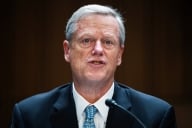You have /5 articles left.
Sign up for a free account or log in.
One by one, the formerly profluent tributaries merging into the higher education revenue stream seem to face increasing obstruction. This time the bad news hits endowments.
In the past month several of the country’s wealthiest universities have announced investment returns for the past fiscal year (which ran from July 1, 2011 to June 30, 2012) that fall significantly short of the growth they saw the previous year – when institutions with more than $1 billion endowments saw returns averaging 20 percent – and in the pre-recession years. The headline report is Harvard’s 0.05 percent loss on its $30.7 billion endowment, the largest in the country.
That return raised flags for the analysts at Moody’s Investors Service, who wrote in an Oct. 1 report that diminished returns were a bad sign for universities where endowment spending makes up a significant component of the budget. "Based on highly variable investment returns over the past decade, we expect endowment-dependent institutions to make more conservative spending decisions for future fiscal years and to more fully assess their operational vulnerability to investment volatility," the agency wrote. "Budgetary models are increasingly stress tested, and management teams are adjusting to more conservative assumptions about long-term rates of return on their endowment. Many have lowered their assumed annual endowment returns to 7 percent to 8 percent, compared to the higher 9 percent to 10 percent return assumptions that were common prior to 2009."
Harvard wasn’t alone in reporting weaker returns this year than last year. Yale University, the University of Pennsylvania, and Duke University all had returns of less than 5 percent. A few institutions did buck the trend, with the Massachusetts Institute of Technology returning 8 percent, though that gain was still less than last year's. Stanford University saw its endowment grow $500 million, though much of that was through new donations and its return on existing funds was only 1 percent. The majority of institutions have not reported endowment returns.
Institutions that rely on endowment returns to fund a significant portion of their budget are an elite set, but higher education finance administrators and consultants say the concern about endowment spending now joins cuts in state appropriations and market and political pressure on tuition prices as another constraint on revenue. What’s quickly becoming apparent is that there is no panacea for revenue struggles, and that means colleges and universities must rethink how they’re spending money.
“It’s not about who’s up or who’s down, or even whether it’s better to be tuition-dependent or endowment-dependent,” said William Jarvis, managing director at the Commonfund Institute. “Both are under stress. The real question, and it’s an open question, is how that is going to be resolved.”
Larry Goldstein, president of Campus Strategies, a higher education finance consulting firm, and former university chief financial officer, said the answer for more and more campuses is budget-cutting and prioritization. “What you’re seeing is a lot of institutions trying to cut back on what they’re supporting through the endowment and right-sizing institutional budgets,” he said.
Endowment managers predicted weak returns for the past fiscal year since last fall, when public equities markets went through a particularly volatile period driven by the U.S. debt ceiling debate, the negative revision in the country’s credit rating by Standard and Poor’s, and uncertainty about the euro's stability. The winter months showed brief improvement, but that dropped off again in the spring.
Sectors such as domestic public equities and real estate fared well, while foreign and emerging market equities and publicly traded commodities did not.
As a result, differences between universities in asset allocation help explain some of the differences in performance. Most institutions do not spell out how they distribute their investments, but Harvard lays out a “Policy Portfolio” -- a set of hypothetical investments with a comparable allocation of assets to the actual investments it made that it can use as a benchmark. That portfolio has more invested in foreign equity and less invested in private equity than the allocations reported by other colleges and universities.
“If you ask endowment managers, I think they would say the returns are what they expected,” Jarvis said.
Last year’s returns, which averaged around 19 percent for all institutions and slightly higher for the wealthiest institutions, approached the kind seen before the recession. They were taken as a sign that one revenue source, unlike state appropriations or tuition growth, might be returning to normal after significant turbulence from 2008-10. In a survey of college and university business officers conducted earlier this year, 51 percent of respondents said growing their endowments was a significant strategy for raising revenue -- a higher response than fund-raising, recruiting international students, and making better use of campus facilities.
But several higher education administrators now think last year's returns were the aberration. “People thought they’d hit the trough and there would be a steady climb out,” Goldstein said. “But it’s not steady. It’s taken a long time to get back to previous market levels. And then it just kind of stayed there, stagnant – I think that’s what it is – and that is starting to be accepted.”
The problem with weak returns is that they limit the amount that can be paid out to support institutional priorities. Endowment payouts are based on an average of returns over several years. For many institutions that average is three years, but some have begun to stretch the average out to five years.
The average effective spending rate last year was 4.6 percent. If colleges and universities factor in the growth necessary to cover inflation (about 3 percent a year), they’re looking at returns of 7 or 8 percent a year to make that level of payout and keep up with inflation. Those levels of return were conceivable when times were good but are looking less likely in the “new normal,” administrators say.
Goldstein said he doesn’t expect institutions to decrease payout much below 4.5 percent, but he did say that institutions are going to re-evaluate what they expect such payouts to support. “In the near term people are going to be more judicious and saying, ‘We’ve got to become less dependent on financing things through endowment,’ “ he said, noting that endowments have traditionally been used to fund “excellence” at institutions rather than operations.
Grinnell College, one of the wealthiest liberal arts colleges in the country, which has an endowment of $1.5 billion for fewer than 1,700 students, surprised much of the higher education world when its administrators announced late last month that they were looking for ways to decrease dependence on endowment spending (which currently constitutes about half the institution’s revenue) and increase revenues from tuition. One key reason: a belief that the college could no longer rely on the same level of robust investment returns.








